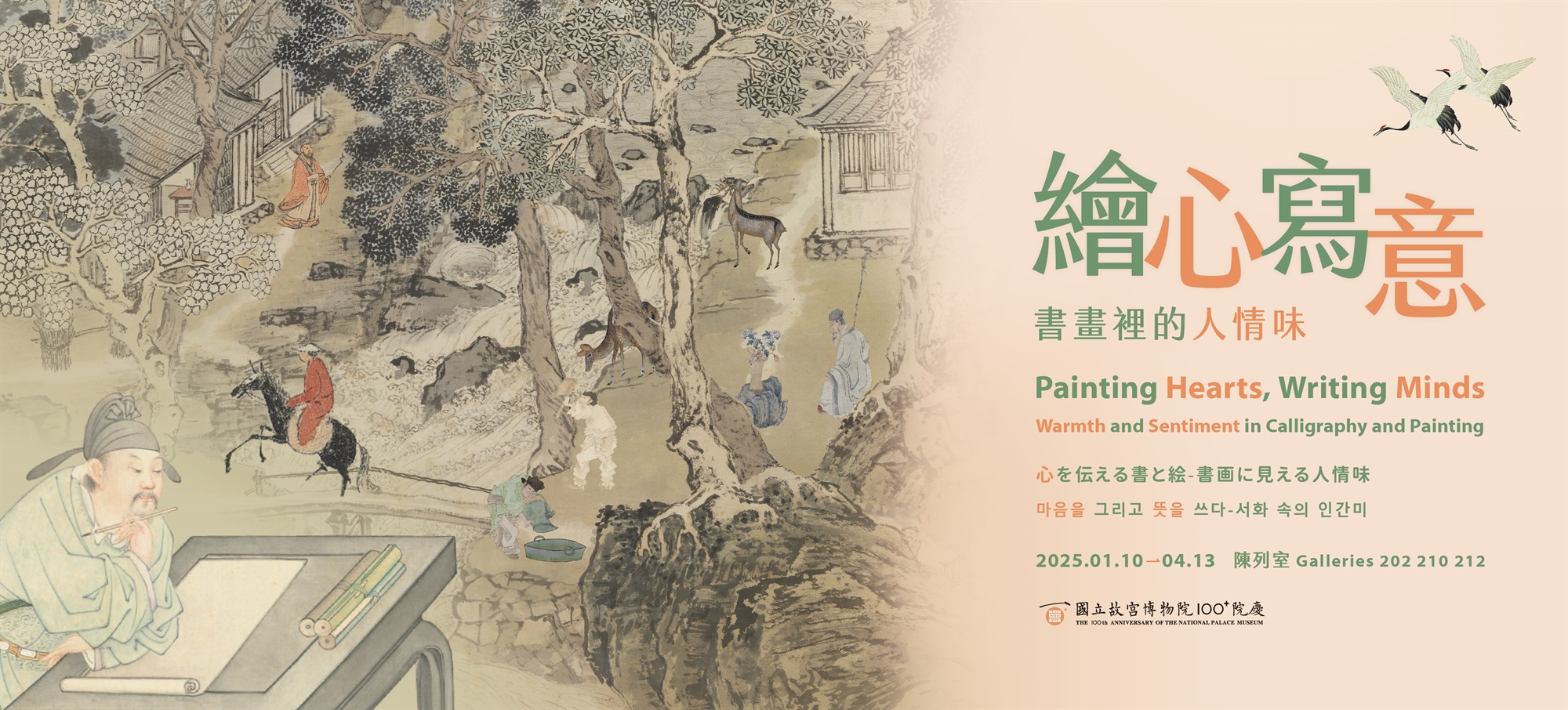Carriers of Elegant Expression
-
A Pair of Pines
Cao Zhibai, Yuan dynasty
SilkCao Zhibai (1272-1355), a native of Huating (present-day Shanghai), had the style name Youxuan and the sobriquet Yunxi (“West of the Clouds”). Cao painted this work on the seventh day of the first lunar month of the second year of the Tianli reign period (1329). He sent this work as a gift to his friend Shimo Baoshan (1281-1347), an aristocrat of Khitan heritage, as a token of his fondness for his faraway friend.
This painting depicts a pair of soaring pines with twisted and knotted branches growing along a boulder-strewn riverbank. The bifurcations in the barren trees’ branches were painted with crab claw-like forms, and the entire scene possesses a sense of sparseness and mist-shrouded obscurity. In terms of its style, this work shows the influence of painters Li Cheng (916-967) and Guo Xi (ca. 1023-after 1087). The pine trees’ undaunted resilience amid harsh snow and bitter frost symbolize an ideal gentleman’s steadfast moral character, as well as the invincibility of the bonds of friendship.
-
The Bamboo of Qi and Wei
Wang Fu, Ming dynasty
Wang Fu (1362-1416), whose style name was Mengduan, was a Ming dynasty painter famed for his depictions of bamboo. This painting’s name comes from praise that its recipient, Liang Qian (1356-1418) uttered upon seeing it. Liang said that when he beheld the painting he felt as if he had travelled to two places known for the lush bamboo growing there: the Wei River (originating in present-day Gansu province) and Qiyuan (located near present-day Qi county in Henan province).
This piece depicts a hanging bamboo branch, its form possessed of beautiful elegance. In this work, Wang primarily used pale ink washes to paint the branches, switching to heavier washes to paint the leaves. There is a perfect balance between density and sparseness, and although Wang painted merely a single branch, one senses that it grows among thousands of others. Bamboo is a symbol of cultivated individuals’ moral integrity and strength of character. For this reason, it serves as an ideal subject for paintings given as gifts by scholars and erudites. -
Mount Dong
Ding Yunpeng, Ming dynasty
PaperThis painting depicts the famed Eastern Jin dynasty scholar Xie An (320-385) being deeply moved by the natural landscape as he gallivants on Mount Dong. Xie An was by nature indifferent to fame and fortune. Disliking his work as a government minister, he resigned his post and went to live in seclusion on Mount Dong (located in Shangyu in present-day Zhejiang province). The palace sent repeated entreaties for him to return to his post, but Xie rebuffed these requests before finally giving in and returning to officialdom. Xie An’s moral fiber and gravitas were profoundly appreciated by the people of his day. Later, during the Ming dynasty, paintings devoted to Xie were widely beloved. Ding Yunpeng (ca. 1547-after 1628) most likely painted this piece for a prefecture-level official of high rank.
In this painting’s foreground a scholar can be seen making his way staff-in-hand, followed closely by a servant boy carrying a stack of scrolls—these elements suggest a depiction of Xie An’s air of sophistication. This painting features a dense composition, with layer upon layer of precipitous mountainsides intersected by dwellings and travelers. Ding used detailed, rhythmic linework to render the massifs’ forms and textures in a style that shows strong influence coming from the Yuan dynasty painter Wang Meng (1308-1385). -
Enjoying Chrysanthemums
Chen Hongshou, Ming dynasty
PaperChen Hongshou (ca. 1599-1652), of Zhuji in Zhejiang province, had the style name Zhanghou and the sobriquets Laolian and Huichi (“Old Lotus” and “Remorseful Latecomer”). Talented at painting human figures and works in the flowers-and-birds genre, Chen tended to depict people in a fantastic, exaggerated manner, evoking charm from within misshapenness. This painting depicts a lofty recluse holding a staff in one hand as he sits upon a short stool made from burl-ridden wood, his gaze trained upon a vase filled with chrysanthemums placed atop a stone. The folds in the figure’s robes were painted with exactitude and vigor, while the brushwork used to paint the stone was unrestrained and easygoing, revealing Chen’s versatility with different painting techniques. A recluse portrayed alongside chrysanthemums calls to mind the poet Tao Yuanming (ca. 365-427) and serves to illustrate cultivated scholars’ aspirations to possess outstanding moral fiber and live aloof of the world. The calligraphic inscription on this work states that it is a copy of the Song dynasty painter Li Tang’s (1066-1150) work by the same name, painted as a gift for a friend and instilled with implications of timeless elegance.


